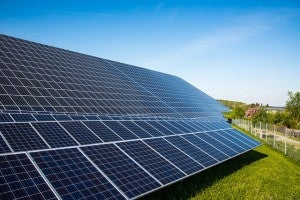 I have been involved in Texas’ energy sector for a long time, particularly from an environmental perspective.
I have been involved in Texas’ energy sector for a long time, particularly from an environmental perspective.
I was there when the state’s metropolitan centers and their robust industrial sectors were challenged to reduce ozone-forming pollution. I was there when Texas deregulated its energy market to increase competition, improve choices for residents and businesses, and lower electricity prices. And now, I’m here to witness the state’s transition to a clean energy economy – one that harnesses more West Texas wind energy, rooftop solar, and natural gas (with the right controls in place) than any other time in history.
The one thing that ties all of these events together is efficiency – something Texas has led in the past.
Energy efficiency is Texas’ most cost-effective way to reduce energy use and carbon pollution from power plants. It also creates other benefits to the power grid, like improving reliability and lowering costs for infrastructure maintenance. Plus, saving energy saves water, which is critical in a state like Texas under the pressure of a multi-year drought. Read More













 In the summer of 2013, researchers aboard a four-engine P-3 Orion aircraft – a variant of the plane used by the U.S. Navy to track submarines – flew over three of the nation’s biggest shale gas regions, taking measurements that would allow them to estimate the amount of methane leaking from the production fields below.
In the summer of 2013, researchers aboard a four-engine P-3 Orion aircraft – a variant of the plane used by the U.S. Navy to track submarines – flew over three of the nation’s biggest shale gas regions, taking measurements that would allow them to estimate the amount of methane leaking from the production fields below.